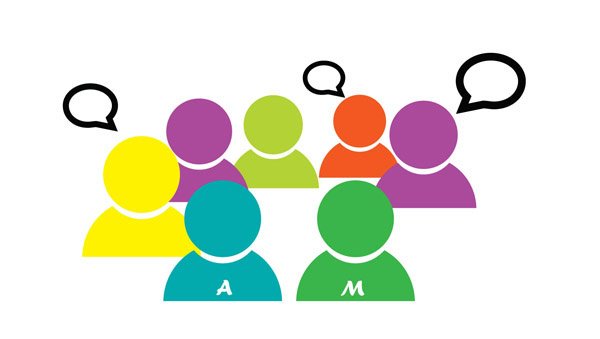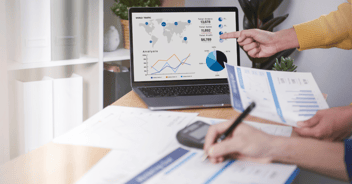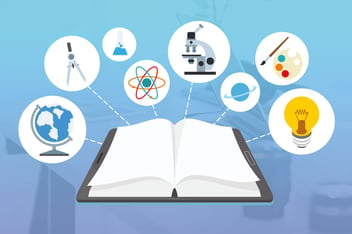Depending on whether your marketing efforts are business to business (B2B) or business to consumer (B2C), everything from the size of your pool of potential customers, to customer intent, search behaviour, advertising focus, and the length and complexity of transactions will be completely different. So you better brush up! This guide runs you through the key differentiators between the two marketing practices in clear, jargon-free language.
How do B2B and B2C audiences vary?
When it comes to B2C marketing, your potential customers are individual consumers. Traditionally, these would have been the people who saw your products on shelves or engaged with your print, billboard, TV and radio ads.
Nowadays, it’s anyone with a smartphone or laptop and a need to buy a product or service. According to research by Deloitte, 91% of 18 to 75 year olds in the UK - equivalent to around 43 million people - check their phone daily. Although not everyone will be a customer, it represents a huge pool of people to target.
Through B2B lead generation, your pool of potential buyers is limited to businesses within your area of operation. By definition, this will reduce the amount of potential customers, but larger order value and longer relationships, as well as the option for more targeted pitching and advertising, can offset this.
An example of B2B vs B2C transactions
For B2C, a stationery retailer might sell a pencil case to a customer, along with a few pens and pencils to fill it with, and a couple of notebooks to write in.
A stationery order in the B2B sector may see a crate of pens being sold, along with 16 whiteboards, 48 board erasers, four desks and four kg of coffee granules.
The former transaction fulfils one customer’s needs there and then; the latter fulfils the needs of an entire department within a company.
There are some other key differences between these transactions: the individual customer paid at the till there and then, and will pay the same price for the products they bought as all other customers at the same store, whereas the business customer will pay for their goods via invoice within an agreed period of the order being fulfilled. The prices they pay will be different to other business customers buying the same products, and this difference will be based on length of relationship, frequency and volume of orders, goodwill discounts, special offers and many other factors.
How do you engage with customers in each channel?

Current trends dictate that advertising within B2C relies more on generating an emotional response, whereas B2B relies on demonstrating value.
In terms of B2C marketing strategies and tactics, take a look at recent big-spend adverts by the likes of John Lewis and Sainsbury’s: they tug the heartstrings relentlessly, and are effectively short films that have nothing to do with the brands in question until a logo is thrust in your face at the end. This subconsciously associates the brand with the emotional response created, with the aim of creating goodwill and trust in potential customers.
Brands often choose to engage as a persona to bolster this emotional connection, too. Adopting a conversational tone on packaging can make a brand seem more personable and trustworthy, but it can also be off-putting to customers if overused, so tread carefully.
In B2C marketing efforts, novelty sometimes correlates with success. Lengthy blog posts are less convincing than VR, 360-degree video and interactive widgets. Think about the branches at shopping centres demonstrating new products, and the techniques they use to grab your attention: no big brand would be seen giving out flyers and pamphlets.
In B2B, this approach is less likely to yield results. Business buyers need and expect to see product benefits identified, along with the advantages of purchasing from your company. Data, testimonials, insights and knowledge that demonstrate your credibility are vital.
Example B2B and B2C user journeys
In B2B, the marketing department within a company decide it’s time to begin working with a new agency. They will outline what they need to do this, and figure out what type of budget works within current and projected budgets. With this information they will open up a tender to agencies in the relevant niche. Each of these will prepare a pitch, all will present, and the company will consider the pros and cons of each. With this information they will report to heads of other departments in the company and decide the best fit for their organisation, before commissioning the services of this agency. This process could take anywhere from weeks to months.
Compare this to an individual who wants some new headphones. Their baseline knowledge will be brands whose products they’ve seen before, either advertised or directly. From here they will begin exploring the headphones they offer, and may begin to research other brands offering headphones. Initial searches, most likely through Google, will be made to learn about the range and features of available headphones. This will reveal products and articles which will be read, and a shortlist of options will be built up. From here, it’s likely that users will read reviews: research by BrightLocal suggests 92% of customers read reviews online, with 33% doing so regularly. This process will take anywhere from a few minutes to a week, depending on how decisive the buyer is.
Lead generation vs brand awareness

From the previous examples, it is apparent that different levels of penetration of your brand are necessary. For B2B, credibility and expertise are required at the pitch stage, and visibility in the relevant space are required when a company invites agencies to pitch. For B2C, brand awareness is required so that your company is one of the first names that potential customers think of when starting the buying process.
In B2C, engaging with potential customers frequently and across platforms is a good way to boost awareness. Advertise where they spend time, and use retargeted advertising to follow them elsewhere and keep your business fresh in their mind.
To summarise
B2C customers want information before making a purchase, and will follow their emotions more than corporate buyers. They may be more fickle, going where the best product is available for the best price rather than staying with one brand out of loyalty (although the Apple vs Android debate proves that sometimes brand allegiance is a factor).
B2B buyer journeys are almost always much longer, with larger products, larger scale orders, and the possibility of fully bespoke solutions. Buyers have more negotiating power, so prices will vary between accounts, and buyers may have to seek approval from higher up in their company before making a purchase. This means customers are more likely to engage in repeat custom to prevent having to navigate the confirmation process again.





